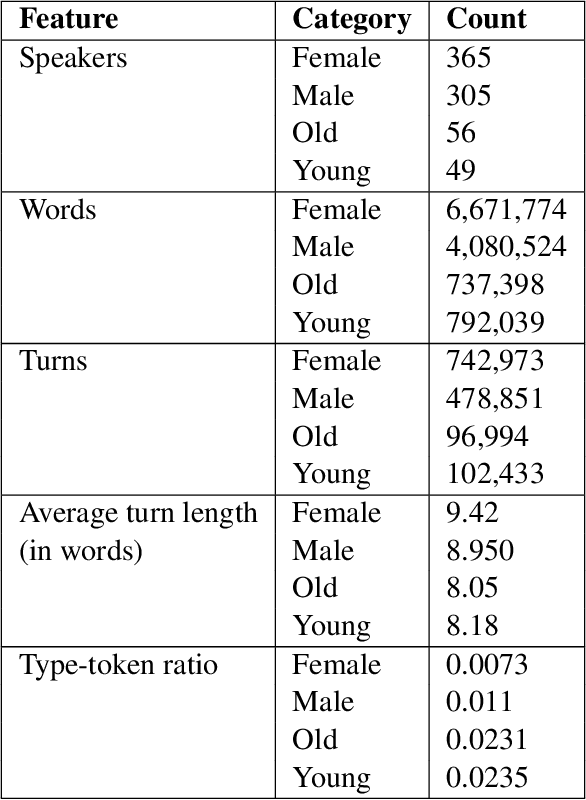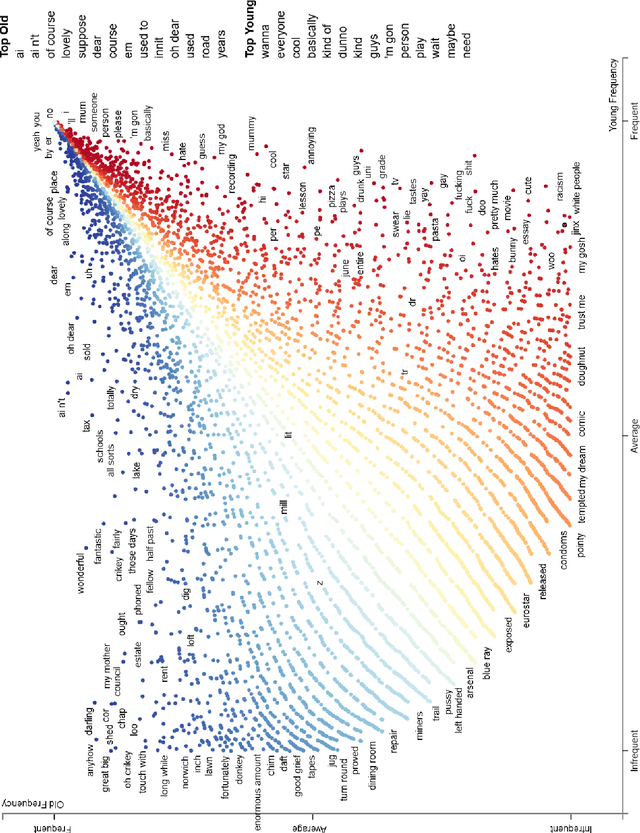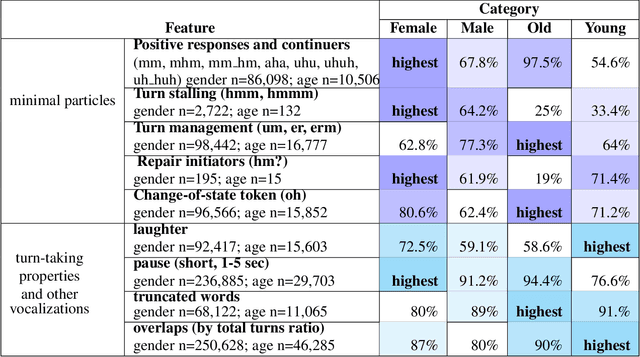Predicting gender and age categories in English conversations using lexical, non-lexical, and turn-taking features
Paper and Code
Feb 26, 2021



This paper examines gender and age salience and (stereo)typicality in British English talk with the aim to predict gender and age categories based on lexical, phrasal and turn-taking features. We examine the SpokenBNC, a corpus of around 11.4 million words of British English conversations and identify behavioural differences between speakers that are labelled for gender and age categories. We explore differences in language use and turn-taking dynamics and identify a range of characteristics that set the categories apart. We find that female speakers tend to produce more and slightly longer turns, while turns by male speakers feature a higher type-token ratio and a distinct range of minimal particles such as "eh", "uh" and "em". Across age groups, we observe, for instance, that swear words and laughter characterize young speakers' talk, while old speakers tend to produce more truncated words. We then use the observed characteristics to predict gender and age labels of speakers per conversation and per turn as a classification task, showing that non-lexical utterances such as minimal particles that are usually left out of dialog data can contribute to setting the categories apart.
 Add to Chrome
Add to Chrome Add to Firefox
Add to Firefox Add to Edge
Add to Edge